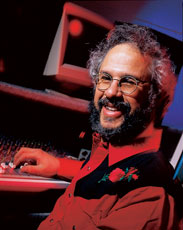|
|
Creating a Multiheaded ComputerBeast |
August 2004 |
Home-computer networks are increasingly popular, but most articles about them assume that you have machines of a recent vintage and want a network so that various family members can access the Internet from different parts of the house. Only occasionally will you see articles on integrating older computers with newer machines or creating a cross-platform home network, and it's rare to find good information on how to use such a network for personal-studio recording.
I was contemplating this lack of information a few months ago when I was considering ways to get more processing power. Sure, I would love to have a blazing-fast machine, but I hate to give up on my old computers after all I have invested in them. So I started thinking about integrating all of my computers into a single powerful, multiheaded computer beast. Rube Goldberg would have been proud of some of the ideas I initially came up with!
I quickly realized that integrating all this stuff is not just a matter of creating a network; it also involves assigning each computer a role and dividing up the tasks in an optimal way. That takes careful planning, and my initial Goldbergesque schemes weren't going to cut it.
While I was mulling this over, I spoke with several personal-studio owners who have a Mac and a PC or more than one PC. Most of them were interested in integrating their machines into a single system, too, and all bemoaned the lack of personal-studio-oriented information on the subject.
Obviously, someone needed to correct this problem. Acting on a tip from associate editor Rusty Cutchin, I began working with author Thad Brown to produce this issue's cover story, ĺ─˙Two Heads Are Better Than Oneĺ─¨ (p. 38). In his excellent article, Brown offers a number of alternative solutions for creating a multicomputer personal-studio system. I found answers in his story to many of the questions I had been asking, and I think most EM readers will, too.
At press time, Apple announced Remote Desktop 2, which replaces the version 1.2 computer remote-control software discussed in our cover story. EM doesn't normally announce this type of upgrade, but since we are discussing networks, I thought it relevant. (The best-known Windows equivalent is Symantec's pcAnywhere 11.0.)
Most of the software's 50-plus new features are meant for commercial and institutional networks, but some could be useful in a serious home network, too. I'm particularly interested in what Apple calls ĺ─˙dramatic improvementsĺ─¨ in screen-sharing performance. You can also now use task lists to view the status of running, queued, and completed tasks on multiple computers. Version 2 adds several powerful features for OS X users who wish to run Unix scripts and commands on multiple Macs. The list price is $299 for managing up to ten systems. ĺ─Ń |
